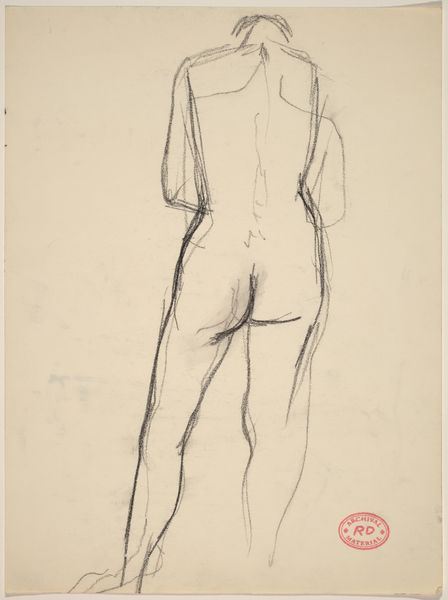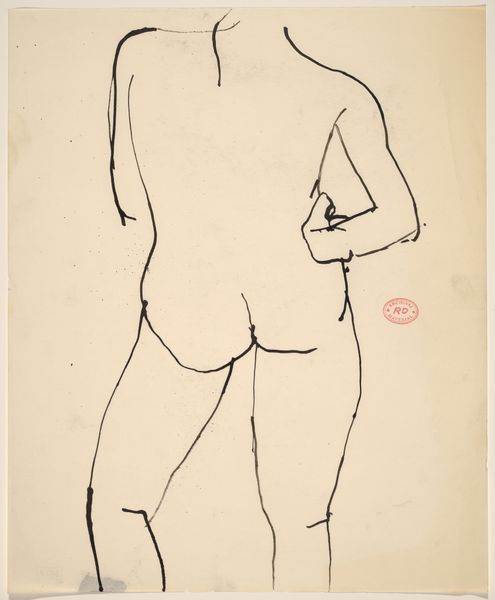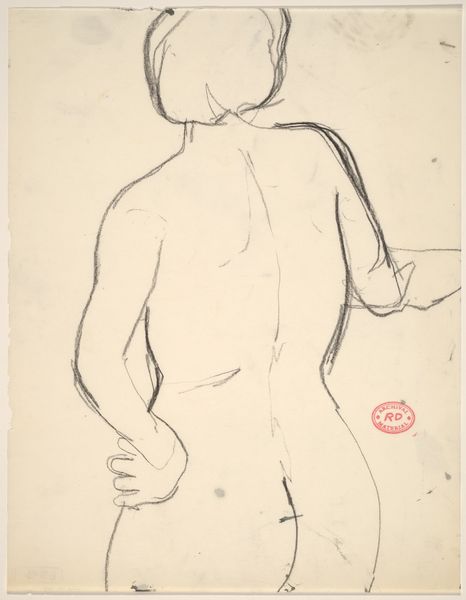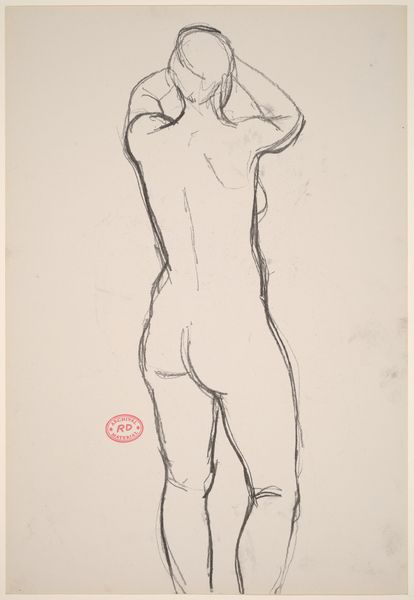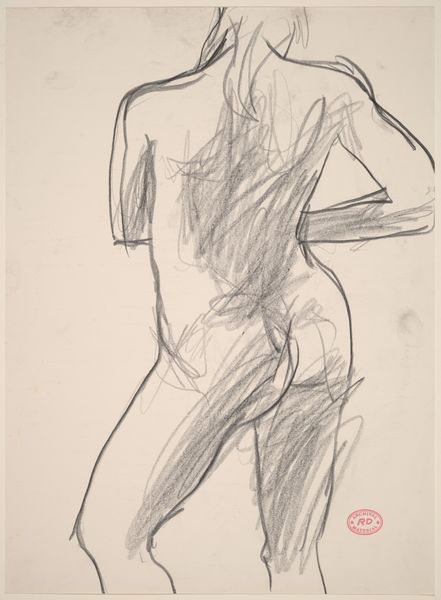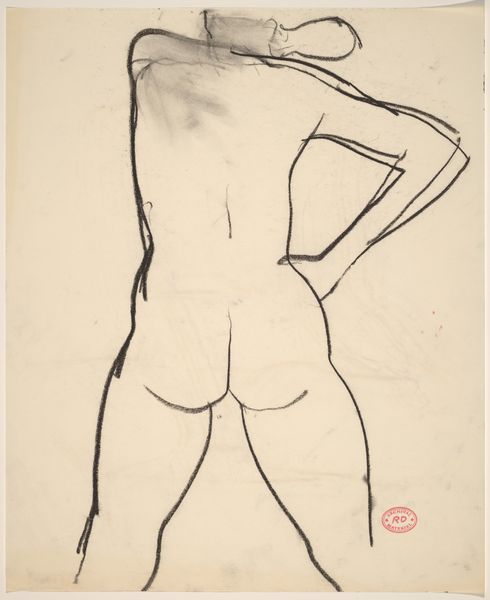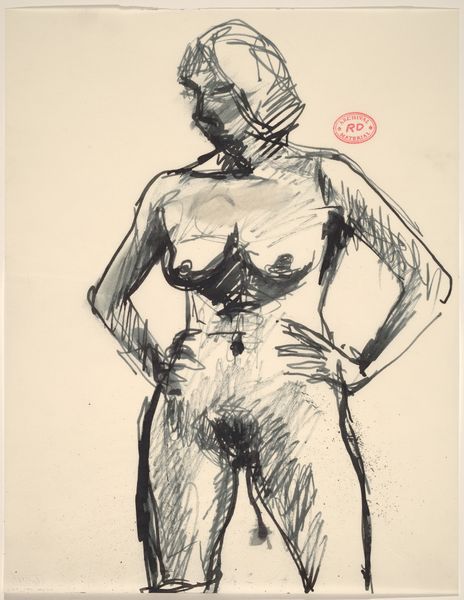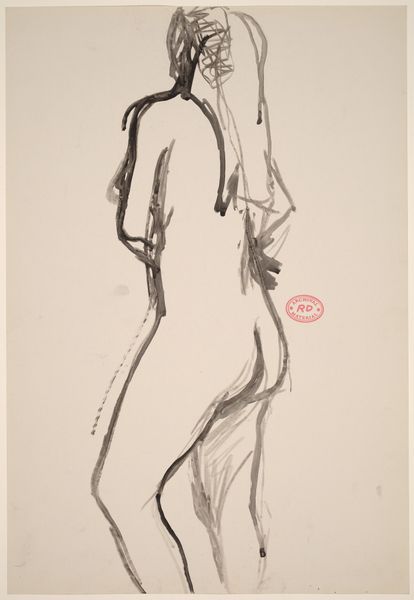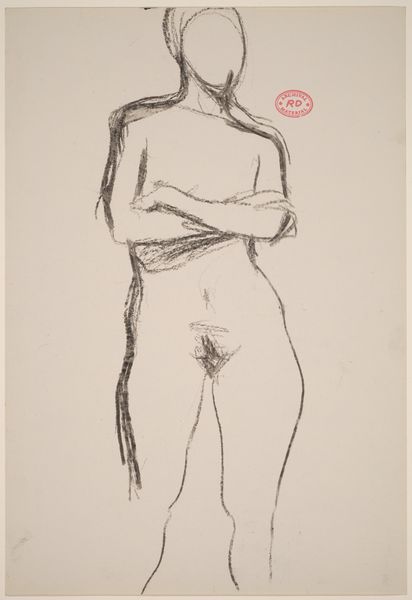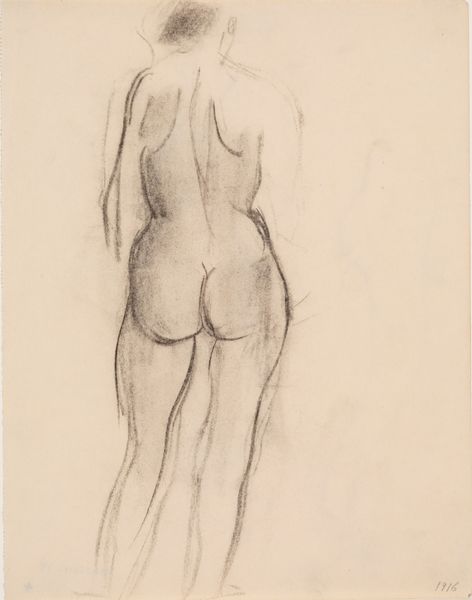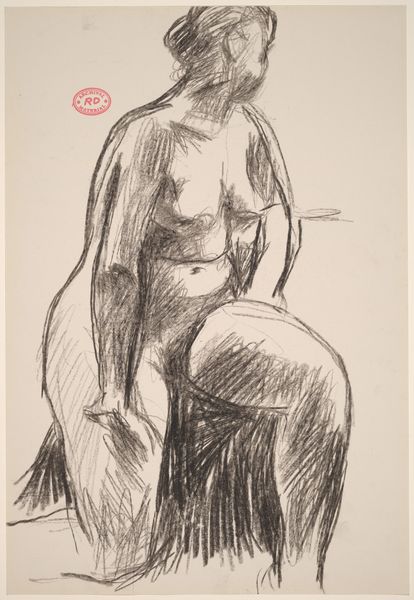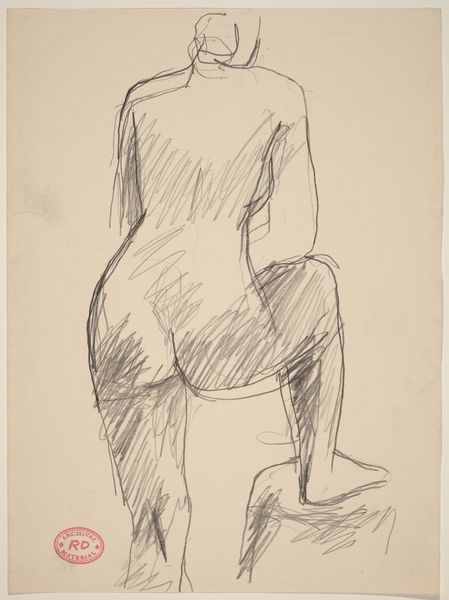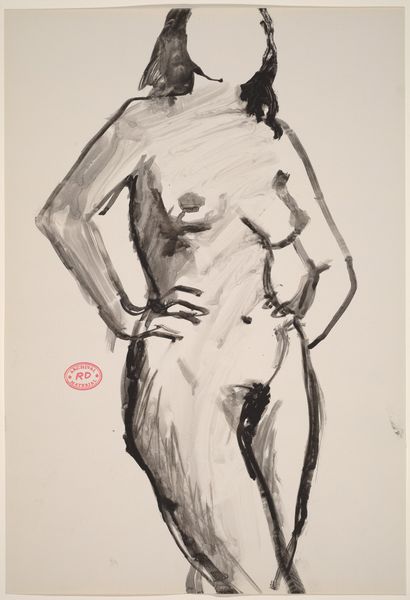![Untitled [rear view of standing nude with her hands at her hips] by Richard Diebenkorn](/_next/image?url=https%3A%2F%2Fd2w8kbdekdi1gv.cloudfront.net%2FeyJidWNrZXQiOiAiYXJ0ZXJhLWltYWdlcy1idWNrZXQiLCAia2V5IjogImFydHdvcmtzLzM2YTc1ZTJiLTRlMmYtNGM0My05NTdmLWY4ODdkM2NkMDcyNi8zNmE3NWUyYi00ZTJmLTRjNDMtOTU3Zi1mODg3ZDNjZDA3MjZfZnVsbC5qcGciLCAiZWRpdHMiOiB7InJlc2l6ZSI6IHsid2lkdGgiOiAxOTIwLCAiaGVpZ2h0IjogMTkyMCwgImZpdCI6ICJpbnNpZGUifX19&w=3840&q=75)
Untitled [rear view of standing nude with her hands at her hips] 1955 - 1967
0:00
0:00
drawing
#
portrait
#
drawing
#
figuration
#
bay-area-figurative-movement
#
nude
Dimensions: overall: 40.6 x 27.9 cm (16 x 11 in.)
Copyright: National Gallery of Art: CC0 1.0
Curator: We're looking at an untitled drawing by Richard Diebenkorn. The artwork, completed sometime between 1955 and 1967, presents a rear view of a standing nude figure, hands resting at her hips. Editor: My first impression is of immediacy. The sketch is raw, energetic, capturing a fleeting moment, perhaps a casual pose between movements. The lines are quite thick and scratchy. Curator: Indeed. Note Diebenkorn’s economical use of line. The contour drawing prioritizes the outer form, delineating the figure's shape with an almost gestural quality. The hatching suggests tonal variations, but the essence lies in the outline itself. There’s a powerful distillation here. Editor: I am fascinated by the averted gaze – the lack of facial features and how that absence reframes the nude figure as an anonymous woman standing in perhaps defiant repose. Her power lies in her lack of concern of how she’s seen by us, if she knows at all. Do you think that we are meant to view this work as a representation of the objectification of women's bodies within the male gaze or does the rawness of the lines imply that this work, which dates somewhere within a twelve year range, precedes contemporary considerations about the way women have been historically depicted in art? Curator: The lack of conventional detailing certainly prompts interesting readings. One might argue that Diebenkorn eschews classical notions of idealized beauty, leaning instead towards a more modernist interpretation of the human form – a reduction to essential shapes and forms divorced from purely representational aims. The focus isn’t the woman’s individual identity but the very idea of figuration. Editor: Perhaps the woman represents the artist, himself. Considering how personal the art making practice can be for so many artists, do you think there's some level of narcissism inherently involved in art practices? Curator: While it’s a bit of a departure to interpret it as self-portraiture, Diebenkorn was heavily influenced by representational painting early in his career, before turning toward landscape abstraction, so, it feels inevitable to want to draw those connections, as he wrestled with pure formalism and grounded observation. It appears, ultimately, it did not go in the direction he imagined when he chose to draw her at the beginning. Editor: The open lines provide a vulnerability – an insight into his exploratory, not entirely complete vision, don't you agree? Curator: Precisely. It’s more than a depiction; it's a document of artistic process. Editor: That certainly provides a contemporary edge to what might have once seemed a merely formal exercise.
Comments
No comments
Be the first to comment and join the conversation on the ultimate creative platform.
